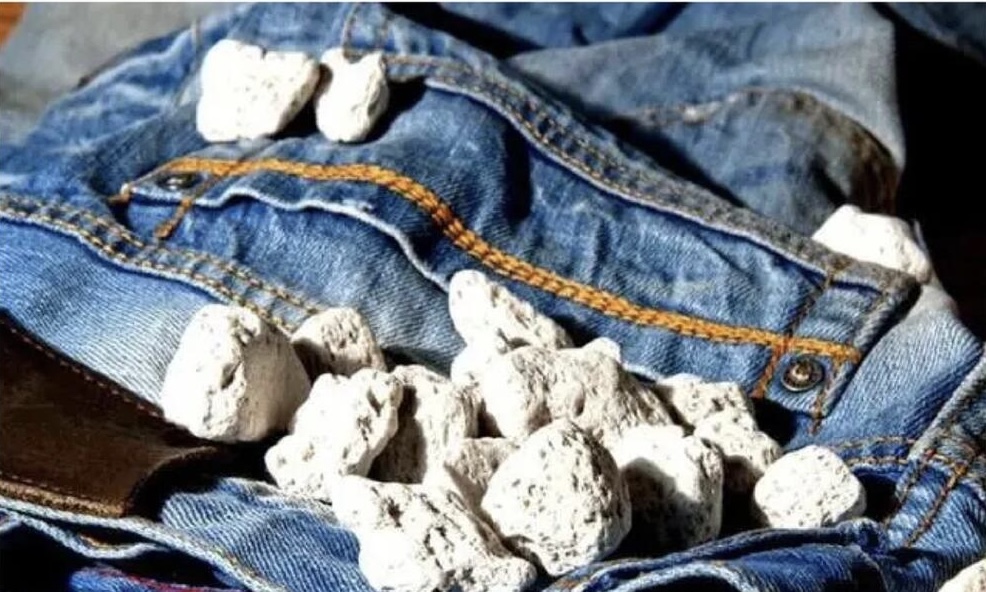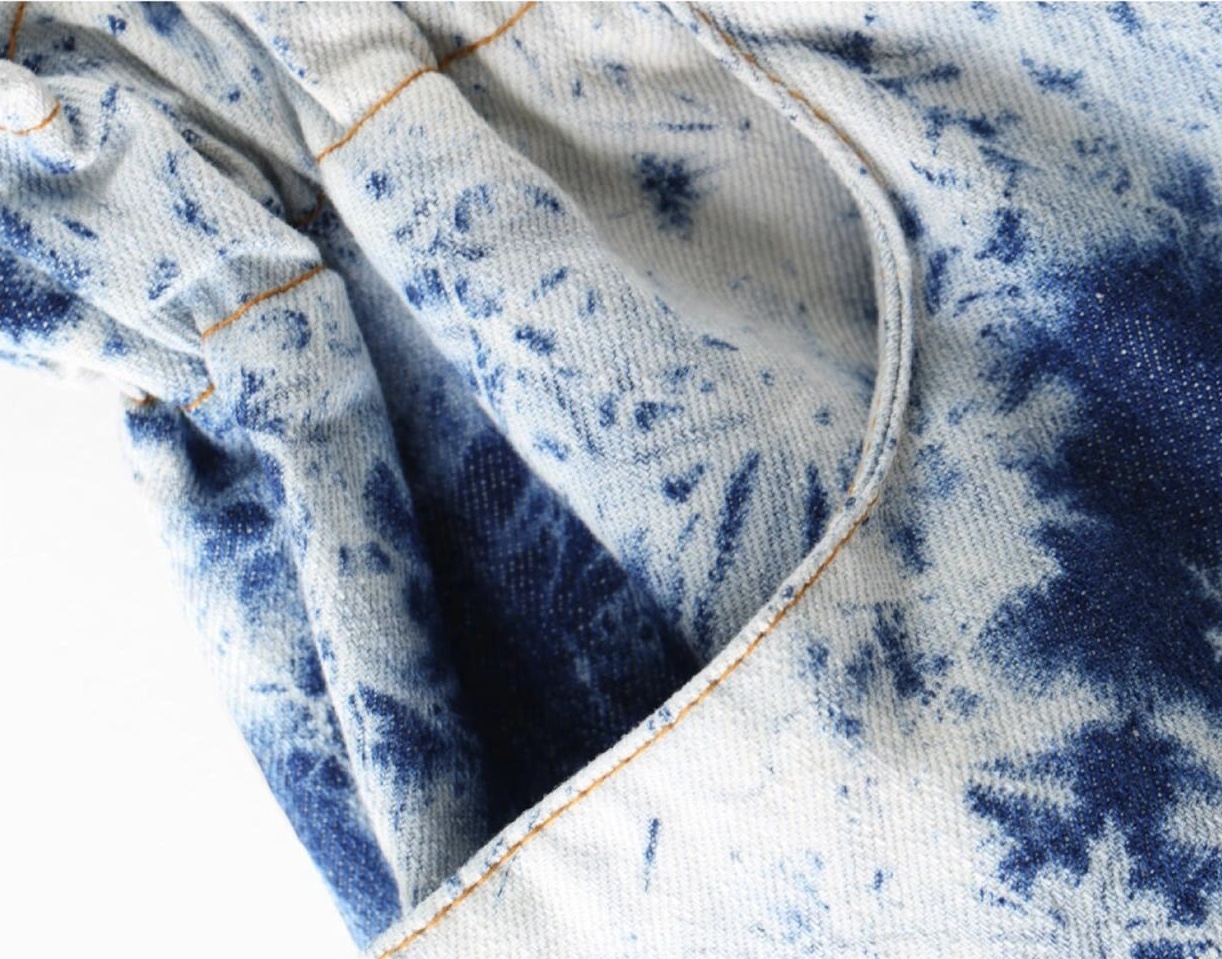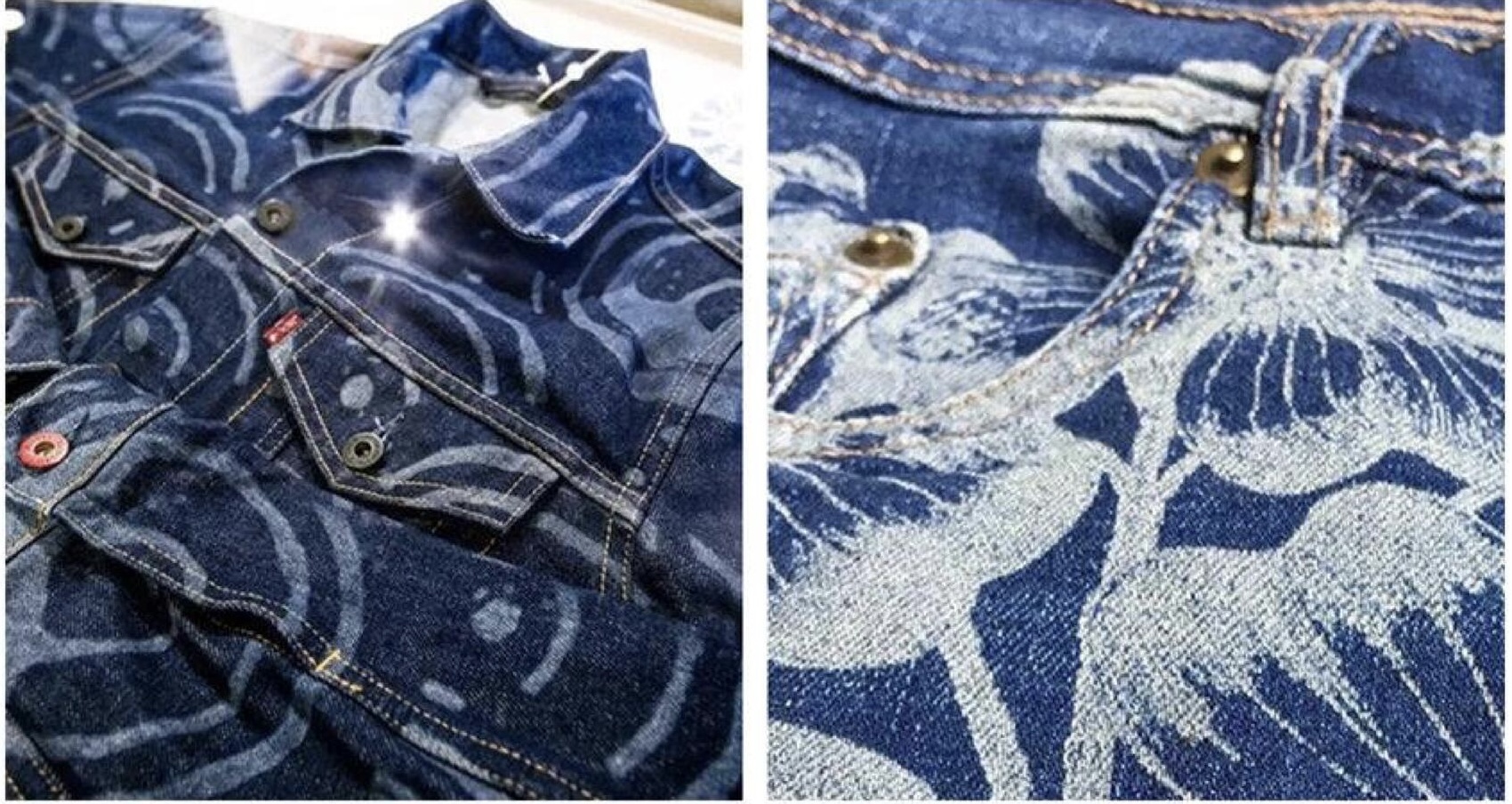A Comprehensive Guide to Denim Washing Techniques: Exploring Popular Methods

Estimated reading time: ~5 minutes
Introduction
Denim has long been a staple in fashion, celebrated for its durability and versatility. But what truly transforms denim into the stylish, comfortable fabric we love is the washing process. From raw denim to selvedge denim, various washing techniques enhance its texture, color, and feel. In this article, we’ll dive into the most popular denim washing methods, drawing from industry insights.
1. Normal Wash : The Everyday Denim Treatment
Principle: Normal washing, involves cleaning denim at 60°-90°C with a detergent for about 15 minutes, followed by a rinse and softener application. Depending on time and chemical use, it’s categorized as light (5 minutes), standard (15 minutes), or heavy (30 minutes) normal wash.
Purpose: This method mimics daily washing, making denim fabric softer and more comfortable while giving it a natural, clean look.
Popularity: It’s a foundational technique, often a starting point for everyday denim care.

Normal Wash
2. Enzyme Wash : Eco-Friendly Denim Enhancement
Principle: Using cellulase enzymes, this process degrades denim fibers under specific pH and temperature conditions.
Advantages: It’s environmentally friendly and safe for wearers, contrasting with chemical-heavy methods.
Drawbacks: Higher costs (up to 4x more than chemical washes) make it less common but highly sought after.
Purpose: Light enzyme washes create subtle fading, while heavy ones achieve significant color loss and softness. Post-treatment includes “deactivation” and rinsing to stabilize the finish.

Enzyme Wash
3. Stone Wash : The Classic Vintage Look
Principle: Pumice stones rub against denim in water, creating a naturally worn effect akin to a ball mill process. It ranges from fine to rough finishes.
Purpose: Ideal for a retro vibe, it boosts softness and flexibility.
Tech Advances: Innovations like stone enzyme blends (e.g., ATB710) refine this method, reducing damage and enhancing effects like contrast and bloom.

Stone Wash
4. Sand Wash : Frosty and Faded Elegance
Principle: Alkaline and oxidative agents, plus sand-washing powders and bulking agents, create fading and a frosty, velvety surface, often paired with stone grinding.
Purpose: This technique excels at vintage fading and softness.
Uniqueness: The frosty velvet effect sets it apart from other methods.

Sand Wash
5. Bleach Wash: Bright and Bold
Principle: After a normal rinse, bleach is added at high temperatures to lighten denim.
Purpose: It delivers vibrant fading and a smooth feel.
Appeal: Adjustable bleach levels make it versatile for bold or subtle looks.

Bleach Wash
6. Snowflake Wash : Artistic White Patterns
Principle: Dry pumice stones soaked in potassium permanganate grind against denim in a cylinder, forming snowflake-like white spots via friction and chemical action.
Purpose: This creates a stunning, irregular fade.

Snowflake Wash
7. Tie-Dye Wash : Creative Color Play
Principle: Combining tie-dye with washing, this method uses chemicals and mechanical action to alter colors and enhance softness.
Purpose: It produces rich, artistic patterns.

Tie-Dye Wash
8. Laser Wash: Modern Precision
Principle: Laser technology replaces traditional washing, precisely etching designs onto denim.
Purpose: Eco-friendly and efficient, it’s a game-changer for customization without molds.

Laser Wash
Why Denim Washing Matters
Denim washing isn’t just about cleaning—it’s about transforming denim fabric into a wearable masterpiece. Whether softening stiff selvedge denim or creating vintage stone wash effects, each method adds value.
Conclusion
Understanding denim washing opens up a world of possibilities for fashion lovers and industry pros alike. Whether you’re sourcing denim fabric wholesale or experimenting at home, these methods define denim’s iconic appeal. Stay ahead by exploring these techniques and their impact.
Customization Services by LYDENIM
🎨 Want custom denim fabrics or unique custom denim garment? LYDENIM specializes in tailor-made solutions to meet your design and production needs.
🛍️ Explore & Get Inspired: Browse our fabric selections and discover design ideas on LYDenim.
🌐 Elastic Clothing: Check out our offerings on MyAlibaba. 📩 Contact Us: Reach out at malone@lydenim.com.
Create your denim masterpiece with LYDENIM—your trusted partner for stretch fabric and custom denim solutions.
